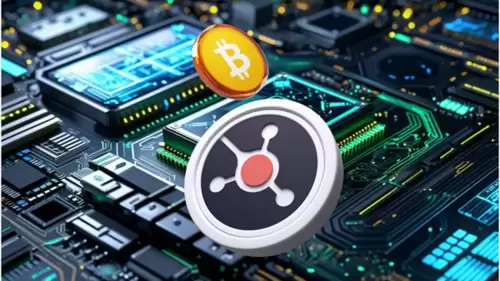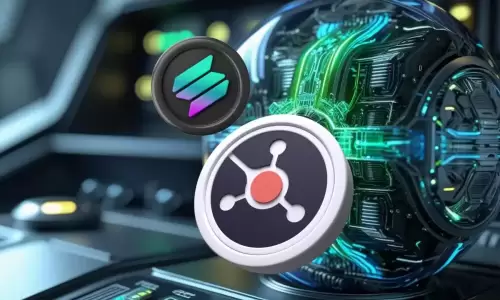 |
|
 |
|
 |
|
 |
|
 |
|
 |
|
 |
|
 |
|
 |
|
 |
|
 |
|
 |
|
 |
|
 |
|
 |
|
Cryptocurrency News Articles
Cardano Faces Explosive Accusation of Embezzling Approximately $600M in ADA
May 20, 2025 at 08:05 pm
Financial dramas are unfolding one after another but are not alike in the crypto universe. The latest development: Cardano, long praised for its academic rigor, faces an explosive accusation of embezzling approximately $600 million in ADA.

Financial dramas are unfolding one after another in the crypto universe. While they are not alike, they all leave lasting impressions.
The latest development: Cardano, often praised for its academic rigor, faces an explosive accusation of embezzling approximately $600 million in ADA. The project’s guiding figure, Charles Hoskinson, promises an audit. This case could redefine trust at the very heart of decentralized governance.
Suspicions Arise Around the Allegra Hard Fork
The fire has been smoldering since an NFT artist, Masato Alexander, claimed that Hoskinson quietly used a “genesis key” to rewrite the ledger during the 2021 Allegra hard fork.
Supporting this claim: a so-called Move Instantaneous Rewards transaction from October 24, 2021, which transferred 318 million ADA from reserves to what appears to be a treasury fund. The accusation speaks of a total embezzlement amounting to $619 million, a significant portion of the Cardano war chest.
However, Hoskinson presents a more mundane timeline: these tokens originated from ICO allocations that remained unclaimed.
According to him, the majority of the targeted 350 million ADA were claimed by their initial buyers over seven long years — and the remaining shortfall was paid to Intersect, the community governance body. “IOG never pocketed such a sum,” he insists, dismissing the idea of a hidden slush fund.
This denial was not enough to calm Twitter: influencers, on-chain analysts, and ordinary users dissect every UTXO searching for anomalies. Some recall the opacity of other projects during previous crises; others emphasize that Cardano built its reputation on formal rigor.
The perception gap is stark: on one side, a protocol aiming to be exemplary; on the other, the image of a founder suspected of accounting manipulation.
Post-Audit Phase and the Future of Governance in the Crypto Sphere
Amid the uproar, the Cardano Foundation and Input Output Global commissioned a third-party “forensic” audit. The report, promised in the coming weeks, aims to trace every ADA since 2015.
Hoskinson, visibly “deeply hurt” by the prevailing skepticism, announces that he will soon entrust his X account to a media team and will revamp his famous AMA sessions. A gesture illustrating the tension between radical transparency and personal fatigue.
Beyond the saga, the episode questions the very nature of crypto governance. Hoskinson, speaking recently at Paris Blockchain Week 2025, advocated for a “collaborative economy” capable of competing with Big Tech soon to be regulated. Ironically timed: the scandal reveals how much a network’s legitimacy depends less on its code than on the fragile trust between founders and community.
What remains is the post-audit phase. If the findings clear Cardano, the process could become a salutary precedent: proving that a blockchain can self-examine without invoking a central authority. Otherwise, the ecosystem will have to accept that no protocol is immune to a human blind spot.
Disclaimer:info@kdj.com
The information provided is not trading advice. kdj.com does not assume any responsibility for any investments made based on the information provided in this article. Cryptocurrencies are highly volatile and it is highly recommended that you invest with caution after thorough research!
If you believe that the content used on this website infringes your copyright, please contact us immediately (info@kdj.com) and we will delete it promptly.





























































